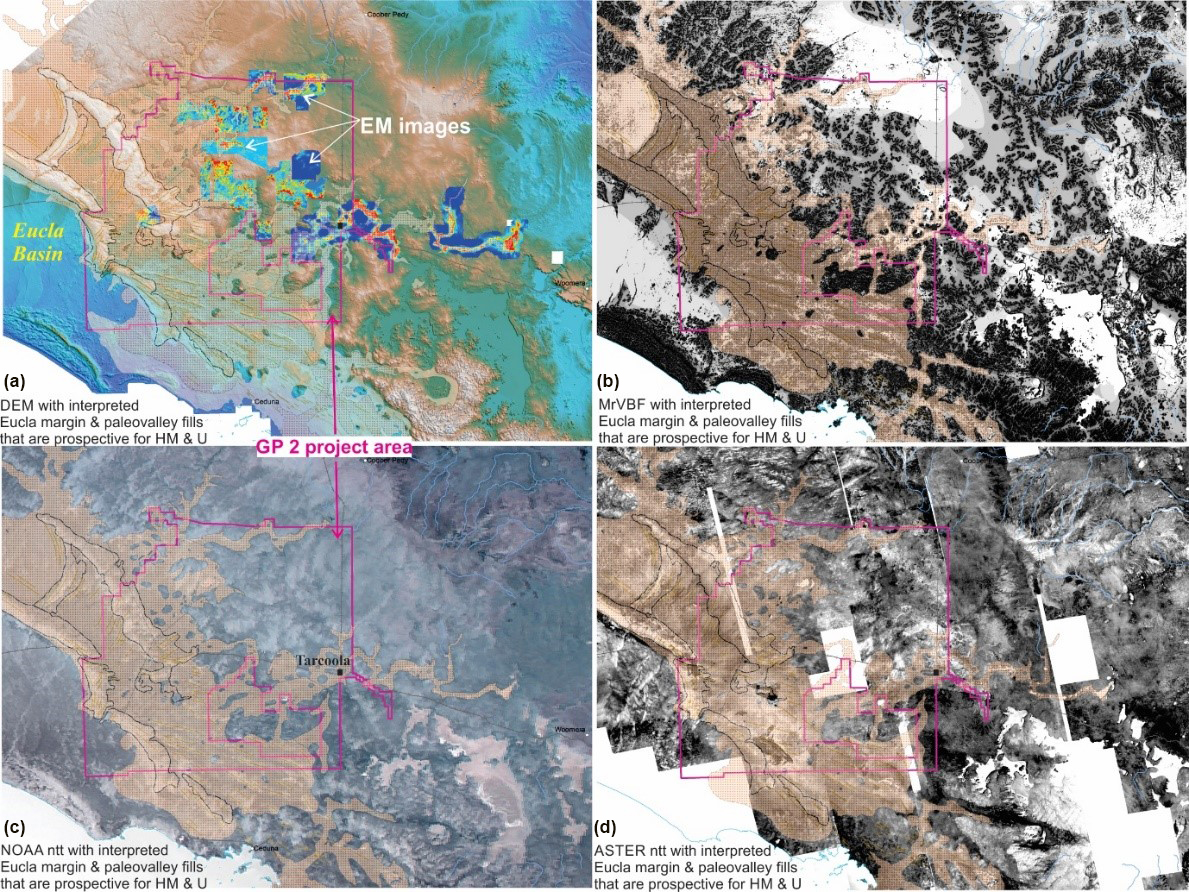Focusing on the cover challenges in the central-western Gawler Craton.
Transported cover and intensely weathered profiles pose a significant technological challenge for mineral exploration in Australia. This is also the case in the central-western Gawler Craton where >75% of the surface and subsurface is characterised by both in situ and transported regolith materials, associated with a variety of landforms and uncovered and shallow covered landscapes.
To address the cover challenges, 2 work programs have commenced as part of the GP2: next generation mineral systems mapping project (Fig 1). The first project aims to remap and update the existing paleodrainage by integrating new multispectral and airborne electromagnetic data and the second focuses on connecting cover to basement in the GP2 project area by applying the lineament and landscape mapping workflow recently developed during a joint GSSA–CSIRO project in the central Gawler Craton. Both projects are due to be completed in June 2023.

Figure 1 Location of GP2 area and landscape projects in the central-western Gawler Craton.
Remapping and updating the paleodrainage of the central-western Gawler Craton and Eucla Basin
This mapping project encompasses 3 main components – data acquisition, data science and insight. The central-western Gawler has been the focus of much of South Australia’s heavy mineral sand and paleochannel-related uranium exploration (Fig 2). Prospectivity has not waned in the years since the initial discovery of Jacinth-Ambrosia following the publication of new paleochannel maps and reports in 2008 and 2012. The GP2 project presents the ideal opportunity to revisit some of these ground-breaking landscape evolution studies with new data from the Gawler Craton Airborne Survey (GCAS) program as well as remote sensing data, including Geoscience Australia’s Bare Earth Data Mosaic, Landsat 7 and/or 8.
The project aims to:
- Provide important constraints on the location of paleochannels.
- Describe and delineate types of cover present in the region, allowing the generation of more clearly defined cover type and cover thickness maps – extending on previous mapping work by the Geological Survey of South Australia.
- Integrate datasets including surface geochemical and biogeochemical sampling, regional drilling and new and existing regional geophysical data.

Figure 2 Landscape recognition maps showing interpreted Eucla Basin margin and paleovalley fills prospective for heavy minerals and uranium on remotely sensed images. (a) Digital elevation model. (b) Multi-resolution valley bottom flatness. (c) NOAA ntt. (d) ASTER ntt.
To find out more email Baohong.Hou@sa.gov.au or Anna.Petts@sa.gov.au.
Connecting the cover to the basement in the central-western Gawler Craton
This project compiles new surface and subsurface lineament and landscape pattern datasets by applying the workflow developed by González-Álvarez, Krapf et al. (2022) and references therein. The approach is based on the identification of basement and surface lineaments and their potential expression though cover, and potentially affecting the variability of landscape domains and its relations. Such basement lineaments may be the expression of structures that link mineral systems at depth with the surface (e.g. surface lineaments, geochemical footprint).
The project aims to:
- Contribute to existing exploration strategies using domain knowledge and digital (D&D) projects by integrating regolith mapping, surface and basement lineament extraction from diverse datasets (e.g. digital elevation model, magnetics, gravity), robust geological interpretations, landscape variability, and mineral systems insights (Fig 3).
- Contribute to the understanding of the relationship between the fabric of the basement and the variability of the cover in the central-western Gawler Craton.
- Better understand the landscape pattern variability in the region.

Figure 3 Example datasets to be integrated as part of the connecting cover to basement project.
To find out more email Carmen.Krapf@sa.gov.au or Jonathan.Irvine@sa.gov.au.
– Carmen Krapf, Baohong Hou and Anna Petts, October 2022


